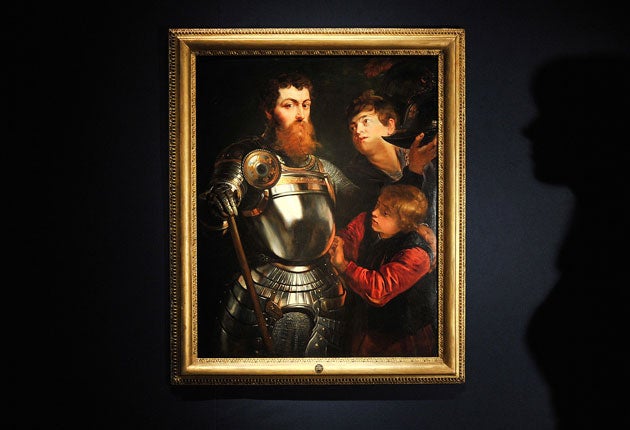Art historians cast doubt over Earl Spencer's £9m Rubens
All eyes are on the star lot of the Althorp sale – but for the wrong reasons

Leading art historians have cast doubt over the authenticity of a £9m painting attributed to Rubens, which was sold by the family of Diana, Princess of Wales, last week. Portrait of a Commander Being Dressed for Battle was the star lot in a three-day sale of chattels from the Althorp estate held by Christie's, which netted £21m for Earl Spencer, the house's owner and brother of the late princess.
But The Independent on Sunday has learnt that Sotheby's, a rival auction house, had initially been offered the sale, but did not go ahead after an external art consultant refused to confirm the painting's provenance. A spokesman for Sotheby's declined to discuss the matter last night, saying: "Sotheby's never comments on sales it doesn't conduct."
Although £9m is the second highest price paid for a work by the Flemish master Sir Peter Paul Rubens, the painting only reached the lower end of its estimate, which was set between £8m and £12m. Brian Sewell, a leading art historian, added to speculation it might not be a Rubens, calling it "an uncomfortable Rubens".
"It's one of those pictures that doesn't quite ring true", he said. "It doesn't surprise me Sotheby's turned it down. I know from my own experience working at Christie's that you very quickly cause grave offence if you express doubts to people who think they own a genuine painting by an old master. People do behave astonishingly."
A spokesman for Christie's said that the auction house had undertaken rigorous research to confirm the painting's provenance, and that it had been vouched for by a panel of academics. However, an outline of the painting's provenance in the catalogue is thick with caveats, almost every paragraph starting with the word "possibly".
A fuller description of its provenance reveals that opinion has been consistently divided, and for nearly 100 years it was attributed to the "school of Pourbus". Only after the Second World War, in an exhibition of pictures from Althorp at Agnew's, was it fully attributed to Rubens.
The portrait, which was bought by an anonymous buyer, was one of 775 items sold by the trustees of the 14,000-acre Althorp estate in Northamptonshire, to raise money for essential work needed on the house, including a new roof. The much publicised sale laid the earl open to accusations of hypocrisy, after he had previously attacked his late father's second wife, Raine, for selling off some of the house's contents in the 1980s. But the earl now has to support six children and two ex-wives, and is due to marry his third wife, Lady Bianca Eliot, later this year.
Sewell, art critic for the London Evening Standard, said that authenticating pictures was one of the main difficulties faced by auction houses. "It's a moral dilemma they face so frequently," he said. "Is it the job of an auctioneer, as the mere engineer of a sale, to express his doubts? Auction houses have been responsible for the rediscovery of a lot of important works, and I'm wholly in favour of both auction houses, but they do have to tread a very fine line. But frankly I think anything under twenty million is cheap for a Rubens."
Earl Spencer was unavailable for comment last night.
Join our commenting forum
Join thought-provoking conversations, follow other Independent readers and see their replies
Comments